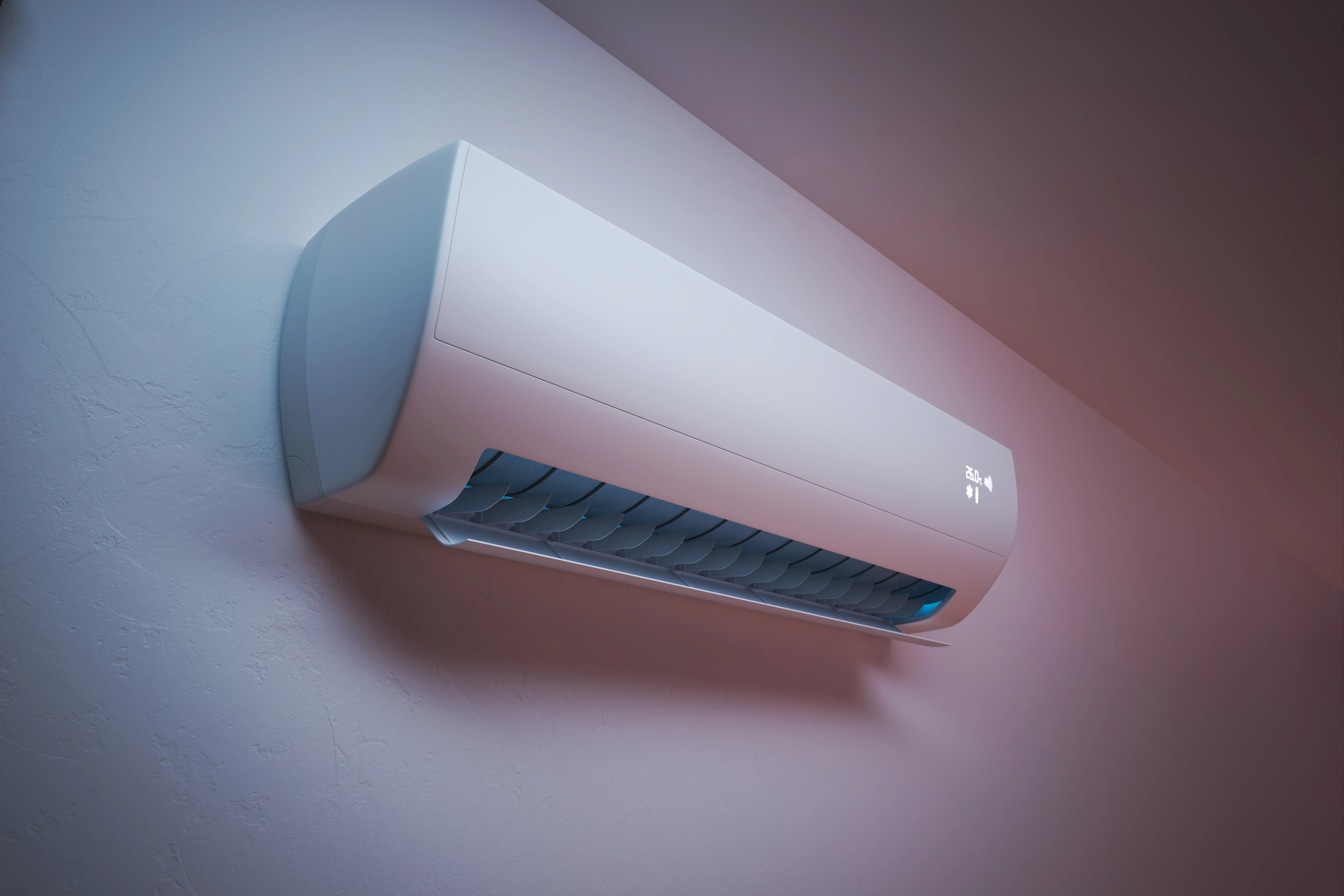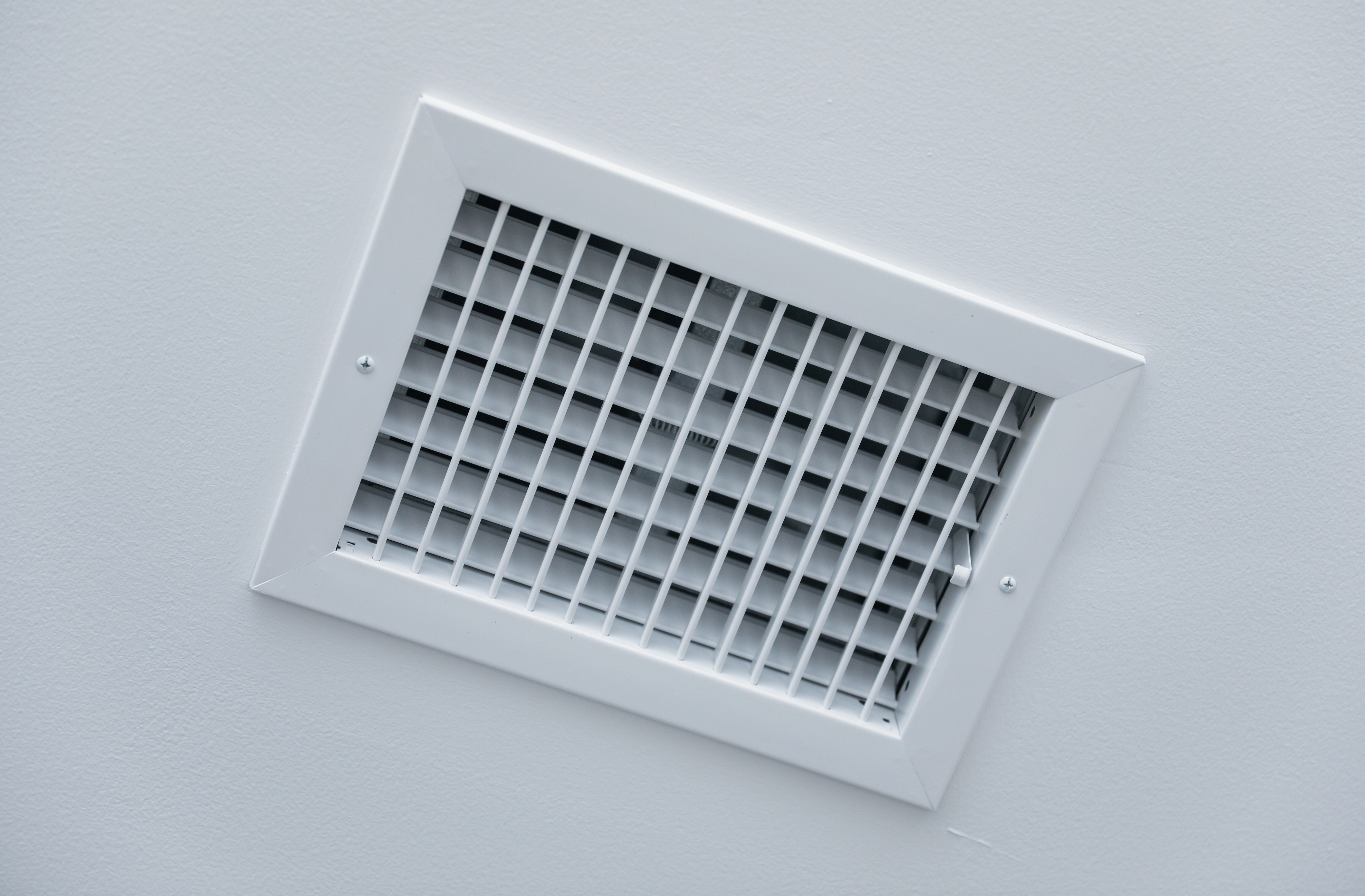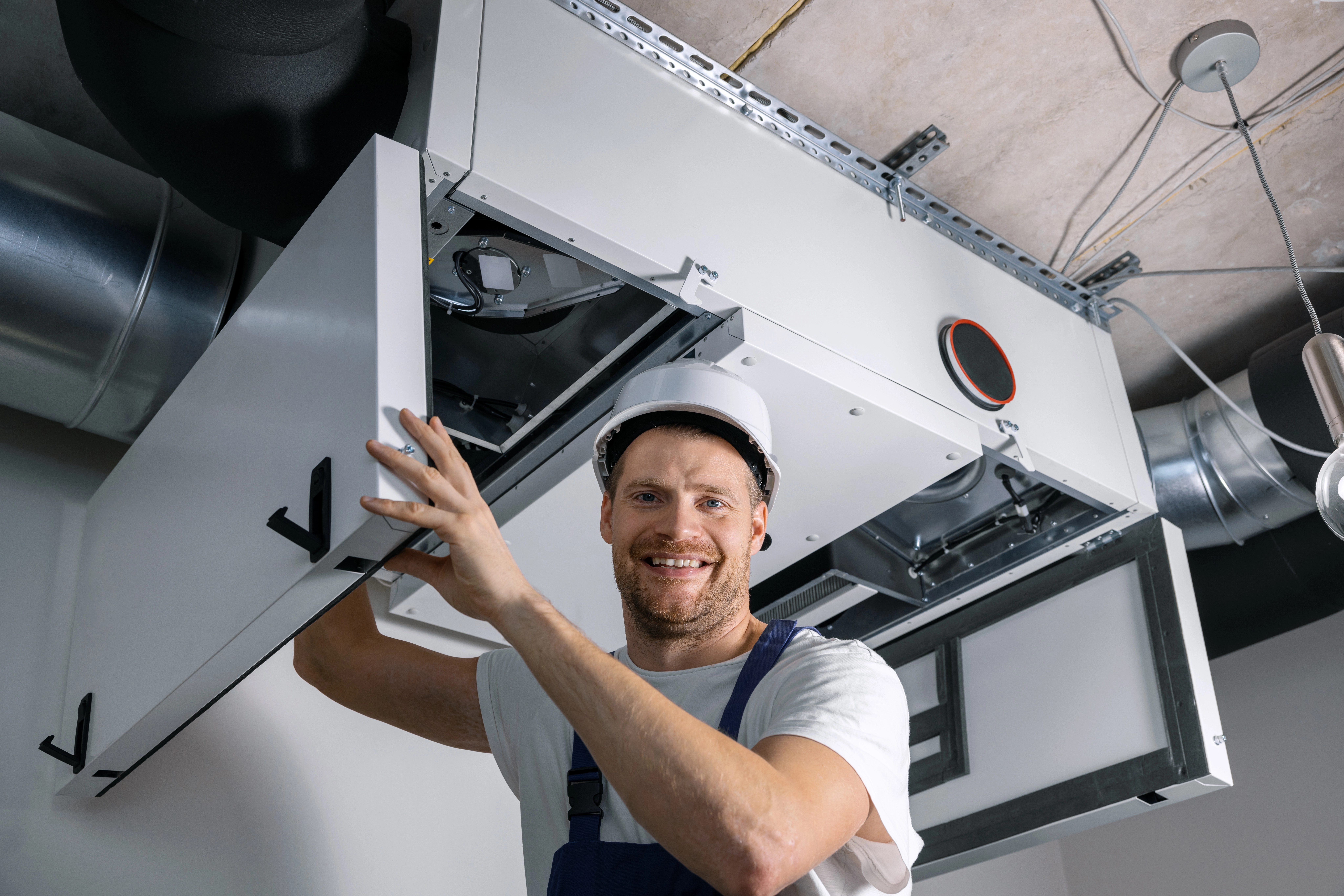ERV (Energy Recovery Ventilator)
- Transfers heat <em>and</em> moisture
- Helps stabilize indoor humidity year-round
- Great for homes that get too dry in winter or humid in summer

Fresh air in, stale air out—balanced ventilation that manages humidity, removes pollutants, and boosts comfort.
Ventilation systems circulate fresh outdoor air, exhaust stale indoor air, and help regulate humidity. Done right, they dilute indoor pollutants (like CO₂, VOCs, and odors), reduce moisture that can lead to mold, and improve year-round comfort for the whole home.

Smart vents let you fine-tune airflow in specific rooms to fix hot/cold spots and reduce wasted energy. Some models include onboard sensors; others use local hubs or cloud services for automation. Prefer no subscriptions? We can spec options that use local control only.

If a room receives marginal airflow, an inline or register-style booster can pull more conditioned air into that space. These units are powered and designed to work alongside existing duct runs for a simple, effective upgrade.

Both systems exchange stale indoor air for fresh outdoor air while recovering energy from exhaust air. The right choice depends on your climate and humidity goals.
ERVs/HRVs can be tied into existing return ducts or set up with dedicated ducting. We’ll recommend the best configuration based on your home, noise targets, and airflow balance.

From smart vents to balanced ERV/HRV systems, we design ventilation that fits your home and your goals.